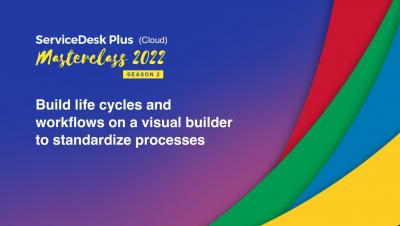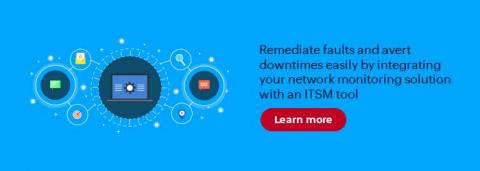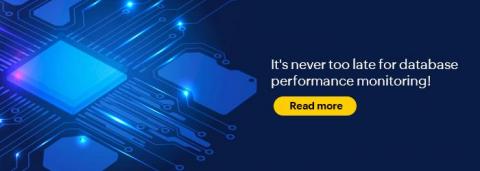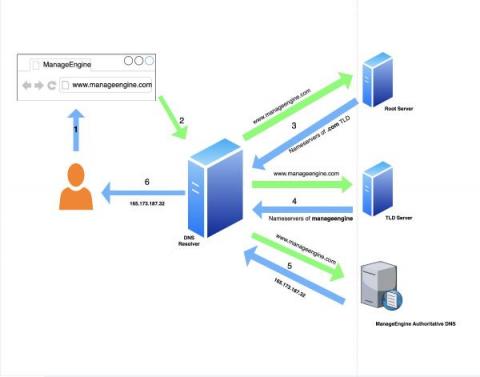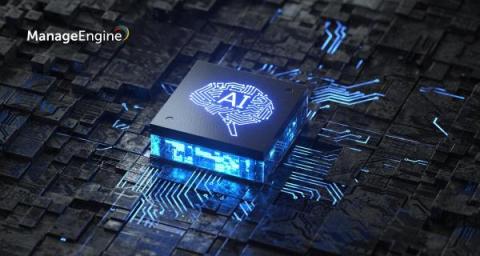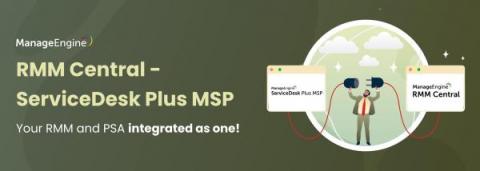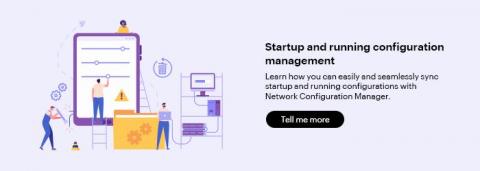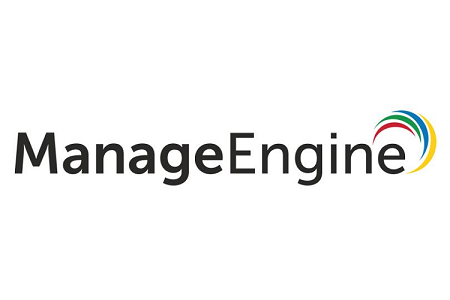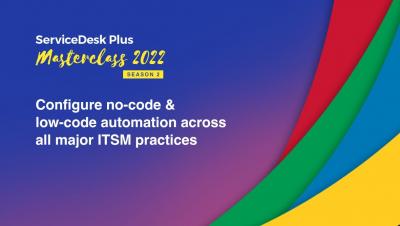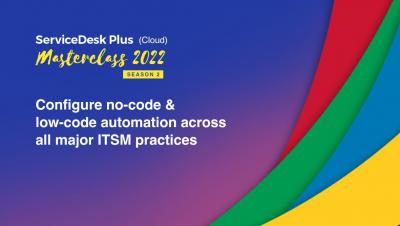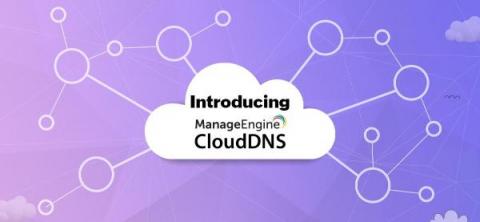Operations | Monitoring | ITSM | DevOps | Cloud
October 2022
S2E3: Crafting visual lifecycles and workflows in ServiceDesk Plus - Masterclass 2022
Celebrating the power of the internet
International Internet Day (10/29) is an occasion for people to celebrate the great invention that transformed the way we live, work, and communicate. The day is an annual reminder of how far we have come since the creation of the internet and where it might take us in the future. Let us look into how the internet invaded every aspect of our daily lives and became indispensable.
Minimizing network downtime by integrating network monitoring solutions with ITSM tools
Being a network admin of an enterprise network, you know better than anyone how disastrous network downtimes might be. The cost of downtime study conducted by Gartner in 2014 found that network downtime costs $5,600 per minute on an average, but this number can range from $2,300 to $9,000 per minute. With organizations moving towards sophisticated networks built on hybrid infrastructures, network downtimes are becoming more frequent and costly.
Network automation tools and their importance in today's networks
Never too late for database performance monitoring
A reliable database system is necessary in the IT operations of an organization to ensure unhindered delivery of information. This is especially true when it comes to business-critical applications, as disruptions in a database system directly impact the end-user experience, ultimately harming your revenue and reputation. Learn about the difficulties inherent to database systems and how monitoring helps resolve these problems.
IT analytics in 90 seconds: Improve app maintenance cycles
How does a DNS work?
DNS resolution is the first step taken to form an internet connection. This includes when any device is being used to access a website or any type of internet-enabled application, such as e-commerce, CRM, or food delivery. These applications are connected to the internet via IP-backbone, which is typically controlled by a protocol named BGP (Border Gateway Protocol). Each application has a unique numbering schema on the internet, referred to as IP address.
Five worthy reads: Is merging artificial intelligence with your thoughts really a good idea?
Five worthy reads is a regular column on five noteworthy items we’ve discovered while researching trending and timeless topics. In this edition, we’ll learn what brain-computer interfaces are, their crucial medical applications, and the ethical challenges they pose.
Australia's Victoria University optimizes student learning experience using OpManager
Learn how Victoria University, which is ranked in the top 2% universities worldwide, leverages ManageEngine OpManager to enhance its network performance, accuracy, and reliability.
What does ServiceDesk Plus do? | Unified IT and enterprise service management platform
Simplify multi-client IT management with integrated RMM and PSA solutions
For managed service providers (MSPs), business revolves around their clients. Tasks like endpoint management, network monitoring, IT security enhancement, and SLA management are routine in the life of an MSP technician. Most standard tasks are handled through two major tools, namely remote monitoring management (RMM) and professional service automation (PSA) tools.
Startup and running configuration management
Configurations are considered the heart of network infrastructure. They are often adjusted to improve the overall workflow of the network environment. One small unnecessary change to a configuration can bring down an enterprise’s entire network infrastructure. Therefore, the changes made to configurations must always be checked to ensure they are in sync with the devices to improve efficiency and performance. A network configuration is generally divided into two parts: 1.
Overwhelmed with network infrastructure monitoring tools? Why go for many when you just need OpManager Plus?
Network infrastructure monitoring is a crucial part of modern IT business. You need a flawlessly functioning network to deliver services and products to the end users. As the size and complexity of a network grows, so do the stakes. Any issue in a large enough network will cause multiple repercussions, and network administrators fight an uphill battle trying to troubleshoot them. With the right sort of monitoring tool, you can ensure a better experience for both the users and the admins.
5 main features that make up the best website monitoring tools
We live in an era where people would rather take the crowded rush-hour subway than drive through slow moving traffic. Website visitors are likely to bounce if a page takes more than four seconds to load. Once gone, there’s a high probability they’ll never be back. Keeping a close watch on your website performance is the only solution for maintaining a high traffic website.
ManageEngine CloudSpend Launches Cloud Cost Management Capabilities for Microsoft Azure
The future of work paves a new path to customer obsession
Common SQL Server challenges and how Applications Manager's SQL Performance Monitor helps you overcome them
Database management systems are an essential component of business applications. Over the years, MS SQL has earned its place in the hearts of database administrators (DBAs) as the most trusted relational database management system. It is still the go-to choice for many DBAs as it helps them leverage its extensive capabilities across various dimensions such as security, portability, transaction processing and analytics.
S2E2: Building efficient no-code automation with ServiceDesk Plus - Masterclass 2022
S2E2: How to configure no-code automation with ServiceDesk Plus Cloud - Masterclass 2022
IT infrastructure monitoring
IT infrastructure monitoring as a whole picture is about keeping track of the health and performance of all the IT assets in a network environment. The network management system gathers data on various metrics, like availability, health, performance, and utilization. Then IT infrastructure monitoring transforms this data into useful statistics that help enterprises scale their businesses.
Introducing ManageEngine CloudDNS for all your critical DNS infrastructure management needs
The DNS is the most critical part of network infrastructure and the only doorway to the internet. We at ManageEngine, a division of Zoho Corp, understand this criticality well and have carefully designed software that helps IT infrastructure management professionals securely manage their domains’ DNS records and elude modern problems in DNS management. We’re excited to introduce ManageEngine CloudDNS, the first critical infrastructure management software in our portfolio.
Device discovery: The path to total network visibility
For an organization to prevent cyberattacks, it first needs complete visibility into all the events that occur within its network. With this visibility, the organization can analyze risky behavior by users and entities, and take the necessary steps to proactively secure itself. However, if an attack were to still happen, the organization again needs complete visibility to identify how and from where the attacker entered the network.


